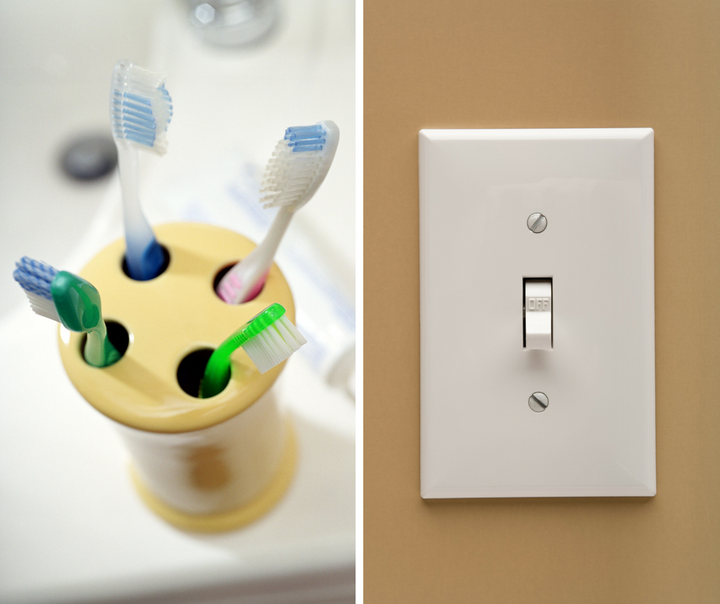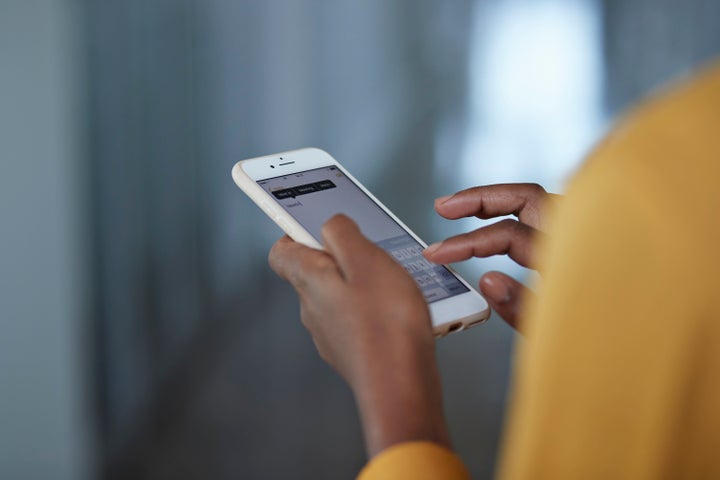
If you’ve been bitten by the spring cleaning bug, chances are your to-do list includes purging your closet, scrubbing down the toilet and, if you’re really dedicated, maybe even replacing your kitchen sponges.
But when was the last time you thought to clean your light switches?
Studies have identified plenty of easy-to-overlook spots in your home and among your belongings (hello, wallet you’ve used for 10 years) that are popular havens for bacteria and fungi.
We’re surrounded by a multitude of bacteria and viruses, and it’s important to know not all of them will make you sick. But if you’re looking for germy places that might need a little extra attention because you’ve never thought to clean them, any of these could be a good starting point.
Your Dishwasher
The dishwasher washes the dishes, but who washes the dishwasher?
While you might think the appliance’s high temperatures and rigorous cycles might be enough to thoroughly clean the dishwasher itself, a recent study found the “extreme environment” supports “microbial survival.”
Researchers from the University of Copenhagen in Denmark, the University of Ljubljana in Slovenia and Ghent University in Belgium found various bacteria and fungi after studying the rubber seals of 24 washers. The dishwasher’s age, its previous use, and the “hardness” of the tap water were all factors that affected the abundance of germs in each appliance.
In an interview with NBC’s “Today,” Philip Tierno, a professor at New York University’s department of pathology, said the researchers’ findings weren’t surprising, and that typically your body can handle the organisms found in the dishwasher.
Cleaning Tip: Tierno recommended using a 10 percent bleach solution to clean your dishwasher’s bottom, sides and area around the seal.

Your Kids’ Bath Toys
In a study published online this month, a team of researchers in the U.S. and Switzerland studied 19 bath toys “used under real conditions.” Researchers found fungi in 58 percent of them.
They suggested the plastic material of the toy, the quality of the tap water, and the “nutrients from care products and human body fluids” could be the culprits.
Cleaning Tip: Since it’s usually hard to clean the inside of these toys, replacing them might be the way to go. If your kid is attached to the toy, there’s hope: Drying off the toy as soon as possible after bath time is the key to preventing gross buildups, Kristy Miller, who works in public affairs at the Environmental Protection Agency, told Real Simple. The toys should remain upright in a dry place away from the bathroom. If you’re past that stage, there are also cleaning agents just for toys.
Your Toothbrush Holder
Good on you if you remember to replace your toothbrush regularly ― the American Dental Association recommends every three to four months ― but don’t forget to clean the holder it sits in all day.
For a 2011 study on the “germiest places in the home” by NSF International, which develops public health standards for consumer goods, the organization had 22 families swab 30 items around their homes. After researchers tested the swabs for coliform bacteria such as E. coli, they found the germs on more than one-quarter of the toothbrush holders.
They also found that while most of the families thought their bathrooms would be the dirtiest place in the home, the kitchen actually took the top spot ― so be sure to double down on those sinks and cutting boards every once in a while.
Cleaning Tip: Whatever cleaner you use, a small bristled brush can help with cleaning out the individual slots. Don’t forget to wipe down the outside too.
Your Lamp & Light Switches
After taking samples from hotel room surfaces in three states, researchers from the University of Houston, Purdue University and the University of South Carolina shared their findings in 2012.
The toilet and bathroom sink ranked high for bacterial contamination, but there were also high levels of bacteria on the TV remote and ― yep ― the bedside lamp switch.
Hard surfaces that many people touch are ideal for microbes, Kelly Reynolds, associate professor of environmental health at the University of Arizona, explained in an interview with Time Magazine. So your own light and lamp switches could probably use a wipe-down or two.
Cleaning Tip: Columnist Heloise recommends using a microfiber cloth to clean up any gross fingerprints. For the actual switch, use a cotton-tip swab.

Your Cellphone
That thing you hold up to your face every day likely needs a good cleaning, too.
In a study published online last year, researchers in Estonia looked at students’ cellphones and found a high level of contamination with potentially pathogenic bacteria.
In 2012, researchers at the University of Arizona said cellphones can “carry 10 times more bacteria than most toilet seats,” and in 2011, neurosurgeon Sanjay Gupta tested CNN host Anderson Cooper’s phone for bacteria and found fecal strep.
Cleaning Tip: Clean that phone, gently. As HuffPost noted in 2016, disinfecting the device a few times a day and remembering to remove the case every once in a while to clean it can prevent buildups. Time Magazine suggests wiping down your phone with a soft microfiber cloth to take care of a lot of the germs. Also, wash your hands frequently and keep the device out of the bathroom. Your hands and face will thank you.
Your Wallet
Even if you pretty much only use credit or debit cards to pay for things, your wallet has probably seen paper money a few times. And those bills are pretty filthy.
One study, conducted by researchers at Southern Connecticut State University, found E. coli and penicillium fungi on bills from people’s wallets. Another, by a team at Wright Patterson Medical Center in Dayton, Ohio, looked at 68 bills, and on 59 of them discovered bacteria that could cause an infection in people with an immune deficiency.
Those bills, of course, can contaminate the other cards and various items in your wallet.
Cleaning Tip: Double-check the material of your wallet. Leather, a popular choice, shouldn’t be cleaned with harsh products, according to The Spruce, but there are leather soaps and other products available.
Your Yoga Mat & Gym Equipment
That yoga mat you lug to the gym is probably a haven for bacteria.
“A yoga mat is a perfect incubator for many of our skin infections,” Dr. Robert Lahita, a professor at Rutgers University’s school of medicine, told Elle in 2016.
If you’re using your own mat instead of one from the gym, you’re already a step ahead of the game. But that doesn’t get you out of cleaning it regularly.
It’s not a bad idea to disinfect your mat ― and perhaps your other gym equipment ― after a sweaty class.
Cleaning Tip: Lahita told Elle readers to use “a Lysol spray or bleach diluted in water” to clean their mats, and to be sure to dry it thoroughly.